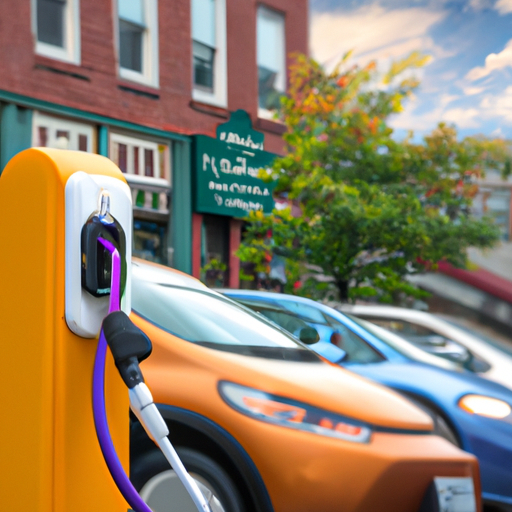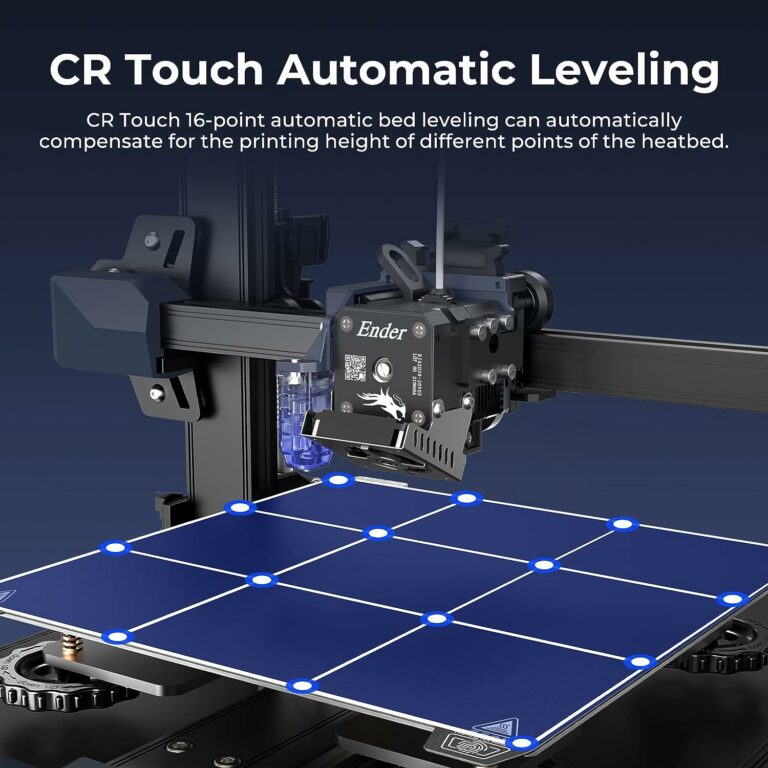Are you ready to join the electric vehicle revolution? As more and more people make the switch to EVs, the need for reliable and efficient charging stations is on the rise. In this article, we will take a closer look at the best EV charging stations available in the market today. From fast-chargers to portable options, we will explore the features, benefits, and user experiences of these charging solutions. Get ready to power up your electric vehicle conveniently and effortlessly.
1. Types of Electric Vehicle Charging Stations
1.1 Level 1 Charging Stations
Level 1 charging stations are typically the most basic type of charging infrastructure available for electric vehicles (EVs). These chargers use a standard 120-volt household outlet, meaning they can be easily installed anywhere with access to electricity. Level 1 chargers provide a slow charging rate, usually adding about 2-5 miles of range per hour of charging. They are best suited for overnight charging at home or in low-demand settings.
1.2 Level 2 Charging Stations
Level 2 charging stations are the most common type of charging infrastructure available today. These chargers use a 240-volt power source, which significantly increases the charging speed compared to Level 1 chargers. Level 2 chargers typically provide a charging rate of 10-30 miles of range per hour, depending on the vehicle and charger. They are suitable for both residential and commercial use, offering faster charging times without requiring extensive installation costs.
1.3 Level 3 Charging Stations
Level 3 charging stations, also known as DC Fast Chargers, provide the fastest charging speeds currently available for electric vehicles. These chargers utilize direct current (DC) power and can deliver high power levels to quickly recharge an EV’s battery. Level 3 chargers can add up to 200 miles of range in as little as 20-30 minutes, making them ideal for long-distance travel and high-demand public areas. However, they require specialized infrastructure and are more expensive to install and operate compared to Level 1 and Level 2 chargers.
2. Factors to Consider When Choosing an EV Charging Station
2.1 Charging Speed
The charging speed of an electric vehicle charging station is an essential factor to consider. Level 1 chargers offer the slowest charging rates, which may not be suitable for those who need quick and frequent charging. Level 2 chargers provide a faster charging speed, making them more convenient for daily use. On the other hand, Level 3 chargers deliver rapid charging speeds, enabling EV drivers to quickly replenish their battery levels during long trips or in busy public charging stations.
2.2 Compatibility with Vehicle
When selecting an EV charging station, it is crucial to ensure its compatibility with your electric vehicle. Different vehicles use different charging connectors, such as the J1772 connector for most Level 2 chargers or the CCS or CHAdeMO connector for Level 3 chargers. It is essential to check your vehicle’s charging capabilities and choose a charging station that provides the correct connector type for your EV.
2.3 Ease of Use
The ease of use of an EV charging station is another aspect to consider. Look for charging stations that have intuitive interfaces, clear instructions, and user-friendly features. Some chargers even offer features like automatic plug-in detection, enabling seamless charging without the need for manual intervention. Additionally, consider the accessibility and availability of charging stations in your area to ensure convenience and ease of use.
2.4 Cost and Pricing Structure
The cost and pricing structure of charging stations can vary significantly. Level 1 chargers are relatively inexpensive, as they often come included with the purchase of an electric vehicle. Level 2 chargers require additional installation costs, including electrical work and permits, but their long-term operational costs are generally lower. Level 3 chargers are the most expensive, both in terms of installation and operation. It is important to consider the initial investment, ongoing electricity costs, and any membership or subscription fees associated with using public charging stations.
3. Reviewing the Top Level 2 EV Charging Stations
3.1 Tesla Wall Connector
The Tesla Wall Connector is a Level 2 charging station specifically designed for Tesla vehicles. It offers a charging speed of up to 44 miles of range per hour, making it one of the fastest charging options for Tesla owners. The Tesla Wall Connector can be easily installed in a home or commercial setting and has a sleek design that seamlessly integrates with the Tesla charging ecosystem.
3.2 ChargePoint Home Flex
The ChargePoint Home Flex is a versatile Level 2 charging station compatible with a wide range of electric vehicles. It offers a charging speed of up to 37 miles of range per hour, making it suitable for both residential and commercial use. The ChargePoint Home Flex also features advanced scheduling and energy management capabilities, allowing users to optimize their charging sessions and save on electricity costs.
3.3 JuiceBox Pro 40
The JuiceBox Pro 40 is a compact and portable Level 2 charging station that provides a charging speed of up to 25 miles of range per hour. This makes it a convenient option for EV owners who require flexibility and mobility in their charging solution. The JuiceBox Pro 40 also offers smart grid integration, allowing users to take advantage of off-peak electricity rates and maximize the efficiency of their charging sessions.
3.4 ClipperCreek HCS-40
The ClipperCreek HCS-40 is a durable and reliable Level 2 charging station that offers a charging speed of up to 32 miles of range per hour. It is compatible with all electric vehicles featuring a J1772 connector, making it a versatile choice for EV owners. The ClipperCreek HCS-40 is known for its robust construction and straightforward installation process, making it a popular option for both residential and commercial use.
3.5 Bosch EL-51254-A
The Bosch EL-51254-A is a Level 2 charging station that provides a charging speed of up to 30 miles of range per hour. It features a compact design, making it suitable for installation in homes, garages, or parking lots with limited space. The Bosch EL-51254-A also offers advanced safety features, such as ground fault circuit interrupters (GFCI), ensuring reliable and secure charging for electric vehicles.
4. Understanding Level 3 (DC Fast) Charging Stations
4.1 How Level 3 Charging Works
Level 3 charging stations, also known as DC Fast Chargers, operate differently from Level 1 and Level 2 chargers. Instead of converting alternating current (AC) from the electrical grid to charge the vehicle’s battery, Level 3 chargers provide a direct current (DC) charge. This eliminates the need for an onboard charger in the EV, allowing for faster charging speeds and more efficient power delivery.
4.2 Benefits of Level 3 Charging
Level 3 charging stations offer several advantages over Level 1 and Level 2 chargers. The primary benefit is the significantly faster charging speed. Level 3 chargers can add a significant amount of range to an electric vehicle in a short amount of time, making them ideal for long trips or quickly recharging in high-demand areas. Level 3 charging also reduces the time spent waiting for a full charge, providing greater convenience and flexibility for EV owners.
4.3 Limitations of Level 3 Charging
While Level 3 charging provides rapid charging speeds, it does come with some limitations. Firstly, Level 3 chargers require specialized infrastructure, making their installation and widespread availability more challenging compared to Level 1 and Level 2 chargers. Additionally, not all electric vehicles are compatible with Level 3 charging. It is essential to check the compatibility of your EV before using a Level 3 charging station to avoid any issues.
5. Evaluating the Best Level 3 EV Charging Stations
5.1 Tesla Supercharger
The Tesla Supercharger network is a robust Level 3 charging infrastructure exclusively available for Tesla vehicles. It offers ultra-fast charging speeds, allowing Tesla owners to quickly recharge their vehicles and continue their journeys. The Tesla Supercharger network is strategically positioned along popular travel routes, ensuring convenient access for long-distance travel.
5.2 EVgo
EVgo operates one of the largest public Level 3 charging networks in the United States. Their charging infrastructure is compatible with various electric vehicle models and offers fast charging speeds. EVgo stations are strategically located in high-demand areas such as shopping centers, restaurants, and highway rest stops, making them easily accessible for charging on the go.
5.3 Electrify America
Electrify America is another prominent Level 3 charging network in the United States. They offer a broad range of charging solutions, including both the CCS and CHAdeMO connectors, to accommodate different electric vehicle models. Electrify America’s charging stations are equipped with advanced features such as liquid-cooled cables, ensuring efficient and reliable fast charging.
5.4 ChargePoint Express Plus
ChargePoint is a leading provider of EV charging solutions worldwide, and their Express Plus platform offers Level 3 charging capabilities. With a focus on high power and fast charging speeds, ChargePoint Express Plus stations are designed for busy public areas and long-distance travel. ChargePoint’s extensive network provides easy access to Level 3 charging for EV owners.
5.5 Nissan CHAdeMO
Nissan’s CHAdeMO charging network is specifically designed for electric vehicles equipped with CHAdeMO connectors. While primarily catering to Nissan EVs, CHAdeMO stations are also compatible with other electric vehicle brands, offering Level 3 charging speeds. The Nissan CHAdeMO network provides convenient access to fast charging for Nissan EV owners.
6. Public vs. Home Charging Stations
6.1 Advantages of Home Charging Stations
Home charging stations offer several advantages for electric vehicle owners. Firstly, they provide the convenience of always having a charging spot readily available, eliminating the need to search for and potentially wait for a public charging station. Home charging also allows for overnight charging, taking advantage of lower electricity rates during off-peak hours. Additionally, home charging stations eliminate the need for membership fees or paying per charging session, providing cost savings in the long run.
6.2 Advantages of Public Charging Stations
Public charging stations serve as a crucial infrastructure for electric vehicle owners who don’t have access to home charging or need to charge on the go. Public charging stations offer increased flexibility, enabling drivers to charge their EVs during shopping trips, dining outings, or other activities. Additionally, public charging stations are often equipped with Level 3 chargers, providing rapid charging speeds that can significantly reduce charging time compared to Level 1 or Level 2 chargers.
7. Smart Features and Technology in EV Charging Stations
7.1 Wi-Fi Connectivity
Many modern EV charging stations offer Wi-Fi connectivity, allowing users to monitor and control their charging sessions remotely. With Wi-Fi connectivity, EV owners can check the status of their charging, receive notifications when the charging session is complete, and even schedule or adjust charging sessions using a smartphone app or web portal. This connectivity feature adds convenience and flexibility to the charging experience.
7.2 Mobile App Integration
Mobile app integration is a common feature in EV charging stations, allowing users to manage and control their charging sessions from their smartphones or tablets. These apps often provide real-time charging information, including the charging speed, remaining time, and estimated range. Some apps also offer features like locating nearby charging stations, reserving charging spots, and monitoring the energy usage and cost associated with charging.
7.3 Energy Management and Scheduling
Advanced charging stations may include energy management and scheduling features that enable users to optimize their charging sessions to suit their energy needs and preferences. These features allow EV owners to take advantage of off-peak electricity rates, balance the charging load to avoid overloading the electrical system, and even schedule charging based on renewable energy availability. Energy management and scheduling help reduce electricity costs and promote more sustainable charging practices.
8. Future Trends in EV Charging Stations
8.1 Expansion of Charging Infrastructure
As electric vehicle adoption continues to grow, the expansion of charging infrastructure is a critical trend in the EV charging industry. Governments, private companies, and utility providers are investing heavily in the installation of more charging stations, both in urban areas and along major transportation corridors. The aim is to make charging more accessible and convenient for EV owners, enabling a broader transition from fossil-fuel-powered vehicles to electric mobility.
8.2 Wireless Charging Technology
Wireless charging technology, also known as inductive charging, is an emerging trend in the EV charging market. This technology eliminates the need for physical charging cables by transferring power wirelessly through electromagnetic fields. With wireless charging, EV owners can simply park over a charging pad, and the vehicle’s battery is replenished automatically. While still in its early stages, wireless charging technology holds great potential to revolutionize the EV charging experience by improving convenience and ease of use.
8.3 Vehicle-to-Grid Integration
Vehicle-to-Grid (V2G) integration is an exciting development in the EV charging industry. It allows electric vehicles to not only consume electricity from the grid but also supply electricity back to the grid when needed. This bi-directional flow of energy can help stabilize the electrical grid, contribute to renewable energy integration, and even provide financial incentives for EV owners. V2G technology is still being explored and developed, but its potential to transform the way we use and think about electric vehicles is promising.
9. The Role of EV Charging Stations in Sustainable Transportation
9.1 Reducing Emissions and Air Pollution
One of the primary benefits of electric vehicles and the associated charging infrastructure is the significant reduction in emissions and air pollution compared to traditional combustion engine vehicles. By replacing fossil-fuel-powered vehicles with electric vehicles, we can reduce greenhouse gas emissions, improve air quality, and mitigate climate change. EV charging stations play a vital role in enabling the widespread adoption of electric vehicles and driving the transition towards a more sustainable transportation system.
9.2 Supporting Renewable Energy
Electric vehicles have the potential to support the integration of renewable energy sources into the electrical grid. By charging during periods of high renewable energy generation, such as during the day when solar energy is abundant, EVs can act as a form of energy storage, reducing the strain on the grid and enhancing the utilization of renewable energy resources. EV charging stations play a crucial role in facilitating this integration by providing the necessary infrastructure for convenient and widespread charging.
9.3 Promoting Energy Independence
Electric vehicles and charging infrastructure can contribute to greater energy independence by reducing reliance on imported fossil fuels. With the transition to electric mobility, countries can decrease their dependence on foreign oil and promote domestic energy production and security. By utilizing renewable energy sources for charging, such as solar or wind power, the environmental and energy independence benefits of electric vehicles are further enhanced.
10. Conclusion
Electric vehicles are becoming increasingly popular, and the availability and quality of charging stations are crucial factors in their widespread adoption. From Level 1 to Level 3 charging stations, the industry is evolving to offer faster charging speeds, improved convenience, and enhanced features. Understanding the different types of charging stations, their advantages, and compatibility with your electric vehicle is essential when choosing the right charging solution. With the expansion of charging infrastructure, advancements in technology, and the promotion of sustainable transportation, electric vehicles and the associated charging stations are shaping the future of mobility and paving the way towards a cleaner and more sustainable transportation system.



